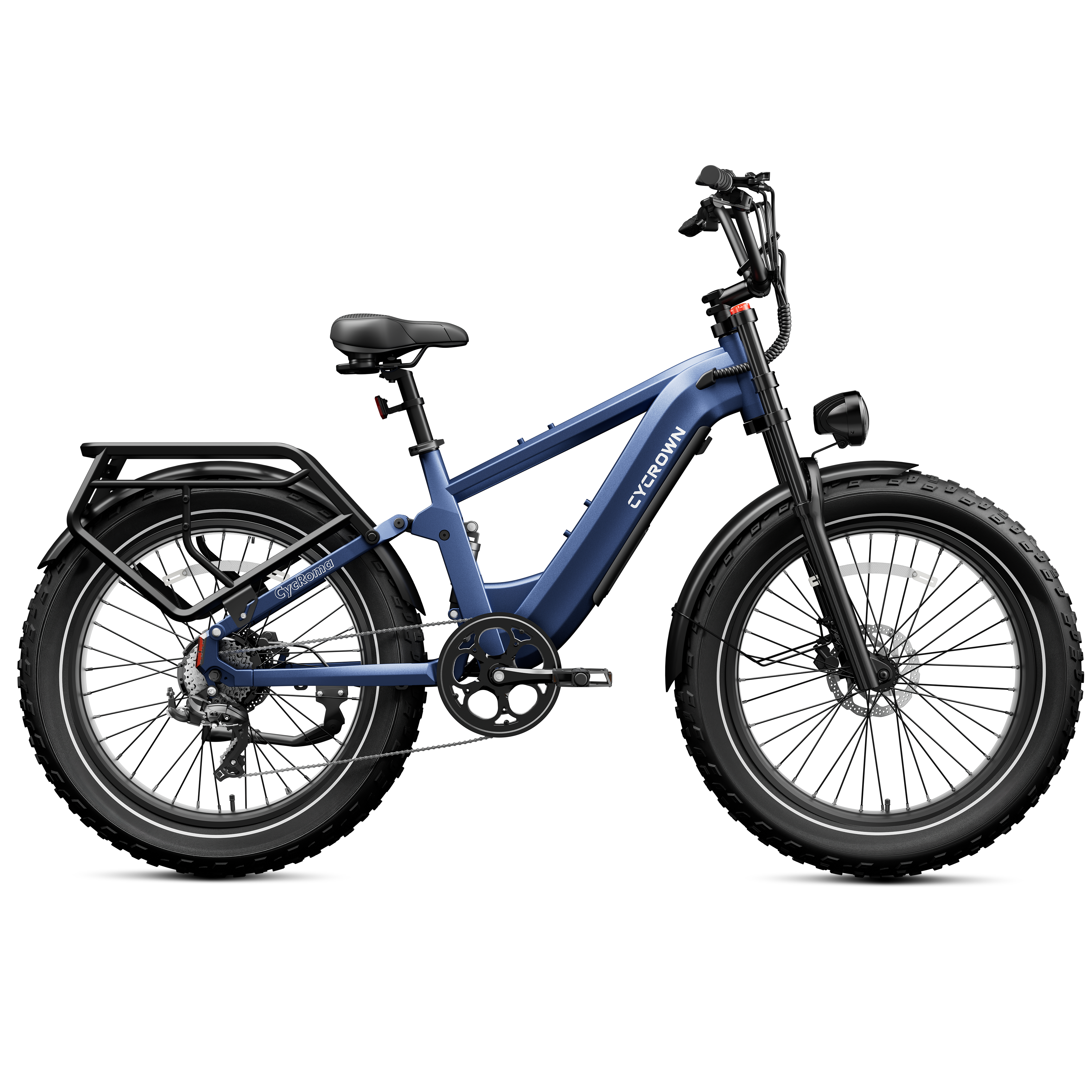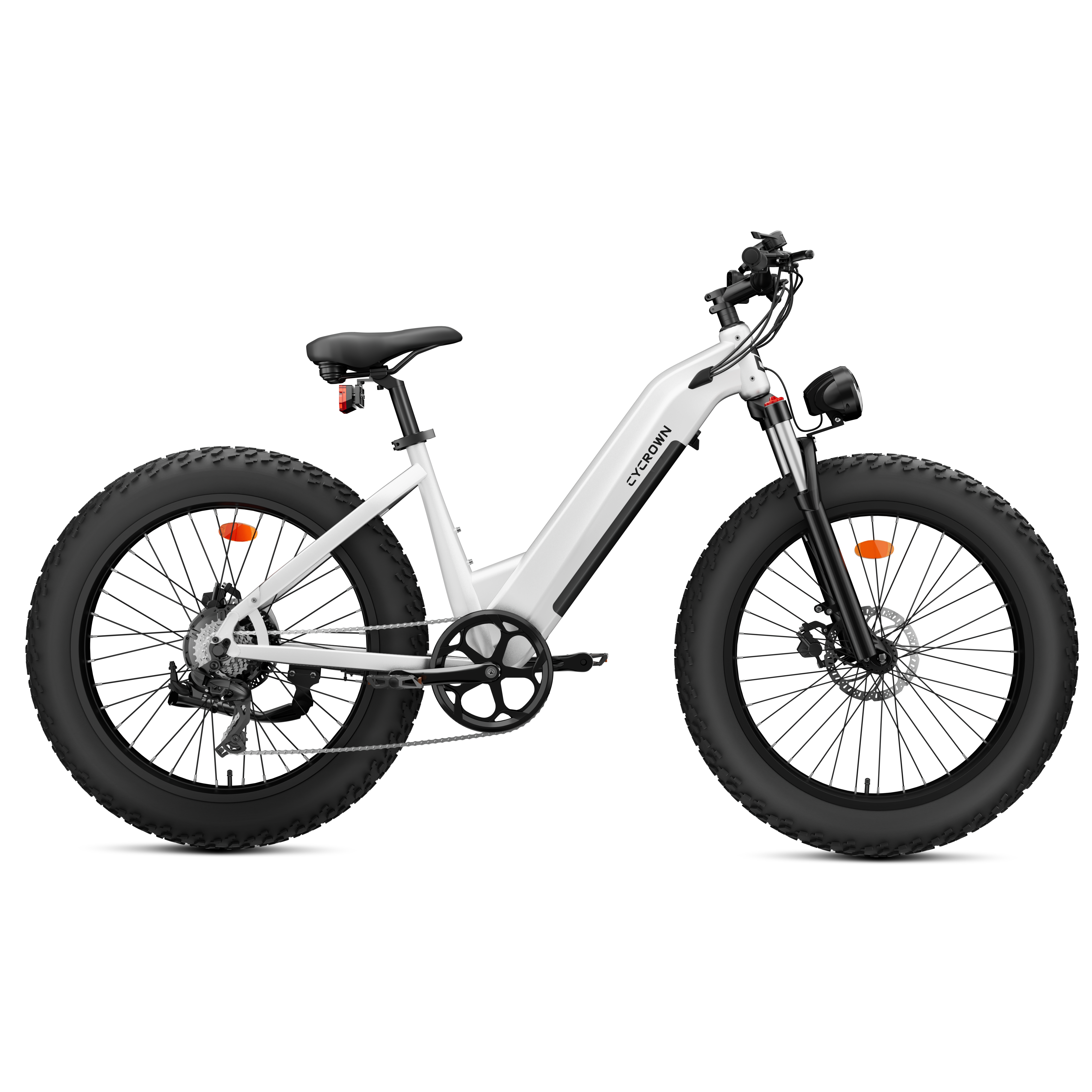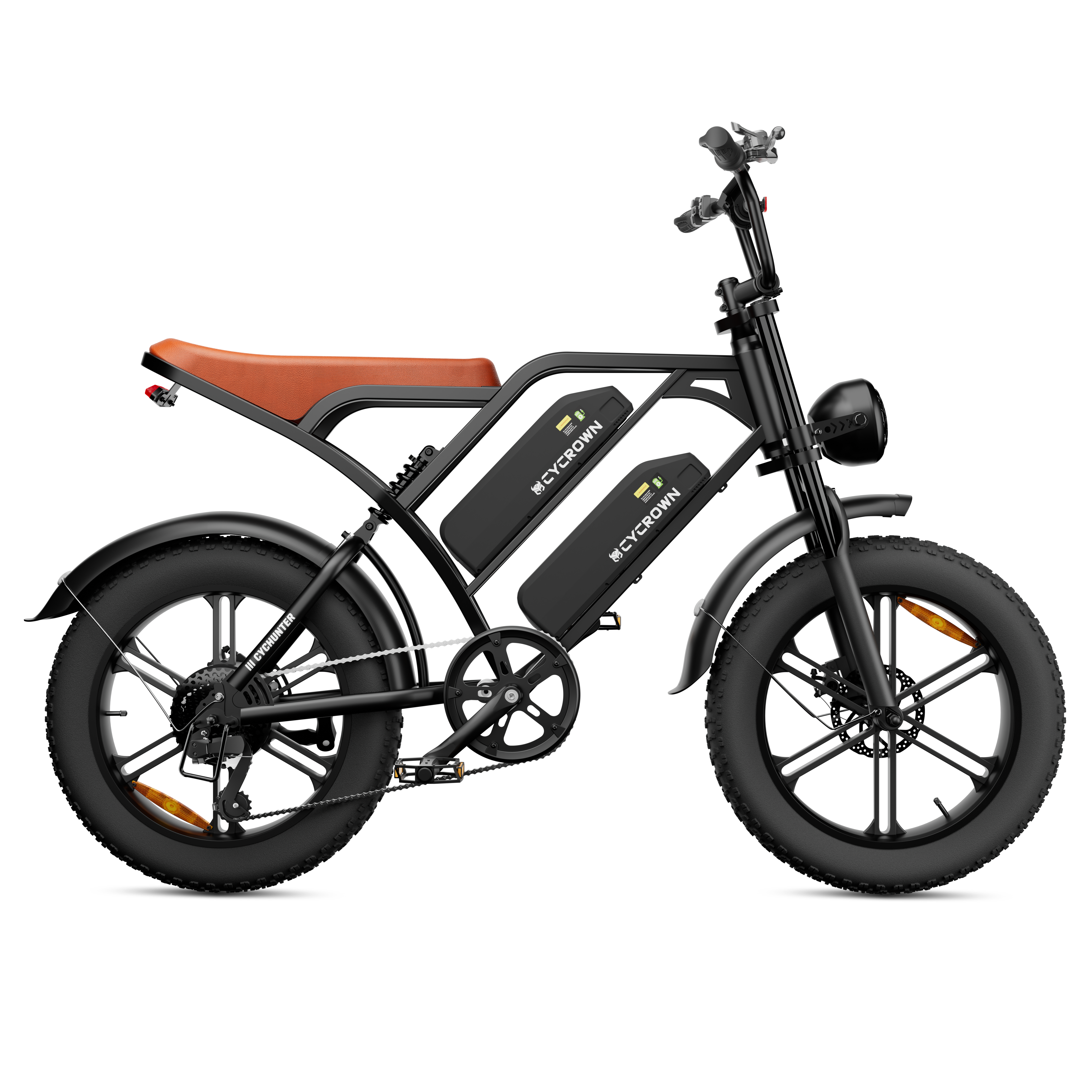Imagine biking uphill without breaking a sweat, that’s the magic of a pedal-assist electric bike.
These innovative e-bikes amplify your pedaling power, making rides effortless and fun.
Pedal assist has quickly become one of the most popular features for e-bike riders, combining traditional cycling with an electric boost.
In this guide, you’ll discover how pedal assist works, who it’s for, and why it can completely change your daily commute or weekend adventures.
Insights 💡:
- Pedal assist helps you ride further and faster by boosting your pedaling.
- It activates automatically when you pedal, making hills and long rides easier.
- Pedal assist bikes still let you control your speed and get exercise.
- They’re perfect for commuters, casual riders, and anyone wanting a smoother ride.
- Read on to learn how pedal assist works, benefits, and buying tips.
What Is a Pedal-Assist Electric Bike?

A pedal-assist electric bike is designed to help you ride farther and climb hills more easily by adding extra power each time you pedal. You still need to put in some effort, but the electric motor supports you along the way.
Pedal Assist vs. Throttle: Key Differences
Pedal-assist bikes give you a boost only when you pedal. The motor senses your pedaling and helps you move faster or climb hills with less effort. It feels natural, almost like you have stronger legs or a tailwind helping you.
Throttle e-bikes, in contrast, work more like scooters. You push a button or twist a handle to engage the motor, and the bike can move without any pedaling. Some e-bikes let you use both pedal assist and throttle for more flexibility.
How Pedal Assist Works
Pedal assist uses sensors and electronics on your e-bike to control when and how much the electric motor helps you as you pedal.
The system responds quickly to your movements, making your ride smooth and easier, especially on hills or longer distances.
- When you start pedaling, the system automatically activates the motor.
- You can choose different assist levels, which control how much power the motor gives you.
- Riding feels smooth and easy, as if you suddenly had strong legs.
- You still control the bike by pedaling, but the motor does some of the work based on your selected setting.
Pedal Assist Sensors
Pedal assist sensors are the main parts that detect your movement and send signals to the electric motor. These sensors watch either how fast you are pedaling or how hard you push on the pedals.
When you start to pedal, the sensor quickly tells the motor to turn on and help out with your pedal power.
There are two main types of sensors used in most e-bikes: cadence sensors and torque sensors. These sensors sit near your bike’s drivetrain and react to your pedal action in real time.
Good pedal assist sensors make your riding experience smoother and less tiring, helping you go faster without much extra effort.
📌Also Read: Best Pedal Assist Electric Bike for Commuters and Adventurers
Magnet Ring Functionality
A magnet ring is a key part of many pedal-assist systems, especially on basic e-bikes. It is a plastic ring placed near your bike’s crank that holds small magnets set in a circle.
As you pedal, this ring spins, and the magnets pass by the sensor each time.
The sensor counts the passing magnets to figure out your pedaling speed and if you are moving the pedals. When the magnets move past quickly, the sensor tells the motor to increase its speed.
If you stop pedaling, the magnets stop moving, which tells the motor to shut off. This setup makes the system quick and reliable for basic pedal assist.
Bottom Bracket Spindle Integration
On many modern e-bikes, the pedal assist sensors are built right into the bottom bracket spindle.
This is the centerpiece of your bike where the pedal arms attach and spin. Having the sensor here allows for better accuracy because it can pick up both the speed and the force you use when pedaling.
Integrating sensors into the bottom bracket keeps your electronics safe from the weather and improves the look of your bike.
This design also lets the system react much faster to your pedaling, giving a smoother and more natural feel.
You get pedal assist right when you need it, which is very helpful when riding uphill or carrying a heavy load.
Types of Pedal Assist Sensors
There are two main types of pedal assist sensors:
- These sensors detect if and how fast you are turning the pedals.
- The motor gives you the same amount of help as long as you are pedaling, no matter how hard you push.
- Cadence sensors are simple, reliable, and cheap.
- Best for riders who want steady motor support without much fuss.
- Can feel less smooth because the power does not change with your effort.
Torque Sensors:
- These measure how hard you are pressing on the pedals, not just if you are moving them.
- The harder you push, the more power the motor gives you.
- Feels more natural and responds faster to how you ride.
- Good for people who want a riding experience closer to a regular bike.
- More expensive and sometimes found on higher end e-bikes.
Comparison Table:
|
Type |
Measures |
Riding Feel |
Cost |
Best For |
|
Cadence |
Pedal speed |
Less natural |
Low |
eginners, simple use |
|
Torque |
Pedal force |
More natural |
High |
Experienced riders |
Choosing the best pedal assist sensor depends on what you want from your e-bike and how you like to ride.
Pedal Assist Benefits: Why Riders Love This Feature
Pedal assist makes bike rides easier and more enjoyable for many people.
You get an extra boost when you pedal, so going up hills or riding longer distances feels less tiring. This means you can travel farther without getting worn out.
Many riders use pedal assist for daily commutes. You can arrive at work with less sweat, making it a great choice if you want to stay fresh.
If you are new to biking or feel unsure on busy roads, pedal assist gives you more control. You can adjust the level of help to match your comfort and skill.
Families and anyone carrying heavy loads can benefit from pedal assist. It helps you move kids, groceries, or gear more easily.
Here are some practical reasons riders choose pedal assist:
- Easier hill climbing: Tackle steep roads without struggle.
- Longer rides: Go greater distances with less effort.
- Sweat less: Stay cool and comfortable during your trips.
- Fun factor: Enjoy a smoother ride on trails or city streets.
- Safety: Get steady support, especially if you are just starting out.
- Carry more: Bring along cargo or passengers without feeling weighed down.
Pedal assist is also helpful for people with injuries or disabilities. It offers more freedom and mobility, letting you ride when you might not be able to on a regular bike.
Pedal Assist Levels Explained (Eco, Normal, High)

Pedal assist levels let you control how much help the motor gives while you pedal. Choosing the right level helps manage your energy, extend your battery life, and match your ride to different roads or trails.
1. Eco Mode (Low Assist)
Eco mode gives you just a gentle push from the motor. In this setting, you usually get around 25-50% extra power compared to your pedaling.
It is the best choice for flat roads, smooth paths, and when you want to travel as far as possible on one charge.
This level saves the most battery, so you can ride longer distances without needing to recharge often.
If you want a workout but still need a little help, eco mode is for you. It is also good if you are riding with other cyclists who are not using an e-bike and you want to match their pace.
Main features of Eco Mode:
- Best for: Long-distance trips, flat routes, and maximum battery savings
- Motor boost: Low, just enough to take the edge off
- Good for: Everyday riding when you do not need much extra power
2. Normal Mode (Medium Assist)
Normal mode balances power and battery use. Here, the motor usually adds 50-100% more power to your pedaling.
This level is perfect for city streets, bike lanes, or rolling hills where you need steady help but do not want to drain the battery too quickly.
In this mode, you will notice easier starts, faster speeds, and smoother climbing on moderate hills.
It is great if you use your e-bike to commute to work or run errands around town, giving you enough boost to keep a good pace without needing to work too hard.
Key points about Normal Mode:
- Best for: Daily commutes, mild hills, and balanced rides
- Motor boost: Medium, strong enough for most needs
- Good for: Getting places faster without much sweat
3. High/Turbo Mode (Max Assist)
High or turbo mode gives you the most help from the motor, often boosting your pedaling by 150-300%.
Use this level when you are facing steep hills, strong headwinds, or just want an easy ride with less effort.
This mode makes climbs feel much easier and helps you keep up your speed even when the road gets tough.
Keep in mind, high assist will drain your battery faster, so it is best to use it only when you need a lot of support and are not worried about running out of power.
High/Turbo Mode features:
- Best for: Steep inclines, rough weather, or when you need a big boost
- Motor boost: High, gives you strong support
- Good for: Short rides, quick errands, or tough stretches where you need all the help you can get
Who Should Ride a Pedal-Assist E-Bike?

Pedal-assist e-bikes are made for people with many different riding needs. They work best for those who want more speed and comfort but still want to pedal and get some exercise.
Pedal Assist Ebike is Perfect For:
➜ Commuters: If you need to get to work or school, a pedal-assist e-bike helps you avoid traffic and parking. You can arrive without being sweaty or tired because the motor does most of the hard work when you need it.
➜ Fitness Riders: You can easily adjust how much help you get. If you want more of a workout, use a lower assist setting. If you want to relax, turn up the assist. This flexibility is great for keeping control over your exercise level.
➜ Seniors or Riders with Injuries: Pedal assist is gentle on your knees and joints. If you are older or have had an injury, riding becomes possible again without pain or exhaustion.
➜ Leisure Cyclists: For people just wanting a fun ride, pedal assist lets you go farther, explore more places, and ride longer. You can keep up with friends or family, even if they are stronger or more experienced riders.
Pedal Assist Ebike is Not Ideal For:
➜ Thrill-seekers: If you want instant speed or the feeling of a motorcycle throttle, pedal assist will likely feel too gentle. The bike starts help only when you pedal, not with just a twist of the wrist.
➜ Off-road Speed Riders: Pedal-assist bikes are not meant for extreme mountain biking or fast downhill riding. If you often want to ride rough trails at high speeds, you should look at e-bikes with more power or dedicated mountain bike designs.
➜ Situations That Need High Control in Tight Places: In crowded areas or tight trails, pedal assist can be hard to manage. The motor adds power depending on your pedaling, so movement is not as precise as when you have full manual control.
If your main goals are thrill, off-road speed, or quick bursts without pedaling, a throttle-based or specialty e-bike may fit you better.
📌Also Read: How Far Can an Electric Bike Go on One Charge? A Guide
Final Thoughts: Should You Choose a Pedal Assist Bike?
A pedal-assist bike can help you travel farther and faster than a regular bike. You still need to pedal, but the electric motor gives you a boost when you need it.
Benefits to consider:
- Easier hills and longer distances
- Less effort on your commute
- You still get exercise
Pedal assist is useful if you want to avoid working up a sweat or arriving at work tired. You stay in control of how much effort you put in by adjusting the level of assist.
A pedal assist bike also makes riding more accessible for people of different fitness levels. If you worry about keeping up, pedal assist lets you ride at a speed that works for you.
You might not like pedal assist if you want a workout every time you ride or prefer a bike with no electronics.
If you want a blend of exercise, convenience, and fun, pedal assist is a smart choice. All you need to do is hop on and pedal.
Electric Bikes You May Also Like 👍
Frequently Asked Questions
Pedal-assist e-bikes give you extra power when you pedal. They help make riding easier on hills, longer distances, and during your daily travels.
Do I have to pedal all the time?
With a pedal-assist e-bike, you do need to pedal for the motor to help you. If you stop pedaling, the motor stops giving extra power. Some e-bikes have a throttle, but pedal-assist only works when you pedal.
Can I ride a pedal-assist e-bike without power?
Yes, you can use a pedal-assist e-bike when the power is turned off or the battery is empty. The bike will work like a regular bicycle, but it may feel heavier because of the motor and battery.
Are pedal-assist e-bikes good for weight loss?
You can use a pedal-assist e-bike for exercise and weight loss. Since you still need to pedal, you burn calories as you ride. You can adjust how much effort you put in by changing the level of assistance.
Can I adjust the level of pedal assist for comfort?
Most pedal-assist e-bikes let you pick different levels of support. You can choose low assist for more exercise or high assist for easier riding. This helps you match the bike’s power to your own comfort and needs.
Which is better throttle or pedal assist?
Pedal assist gives power only when you pedal, which can feel more like regular biking. It also helps you get more exercise. Throttle-only lets you ride without pedaling. Some bikes offer both, and the best choice depends on your riding style and preferences.
Does pedal assist drain battery?
Pedal assist does use battery power whenever it adds extra help while you pedal. More assistance levels or riding uphill will use more battery. If you use a lower assist level, your battery will last longer.













